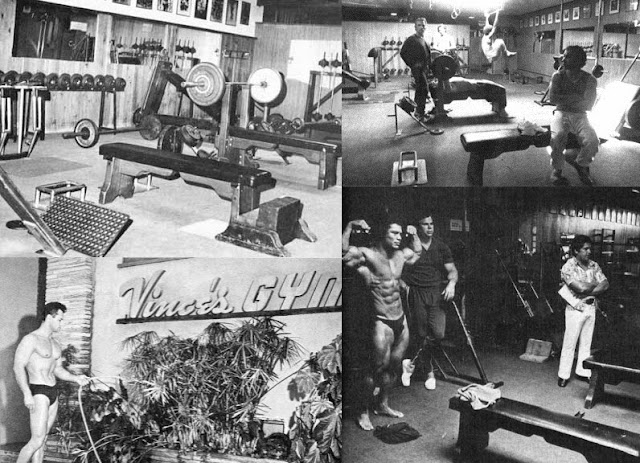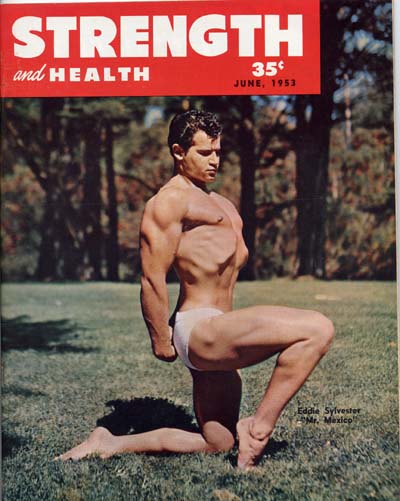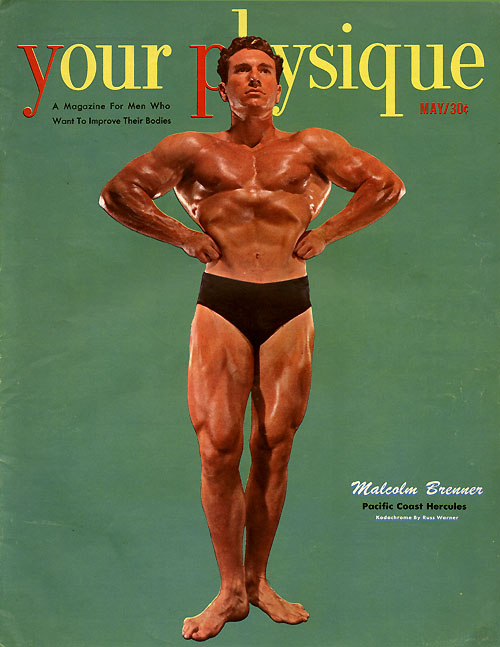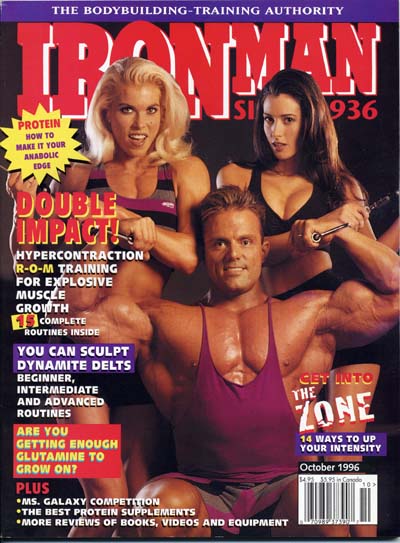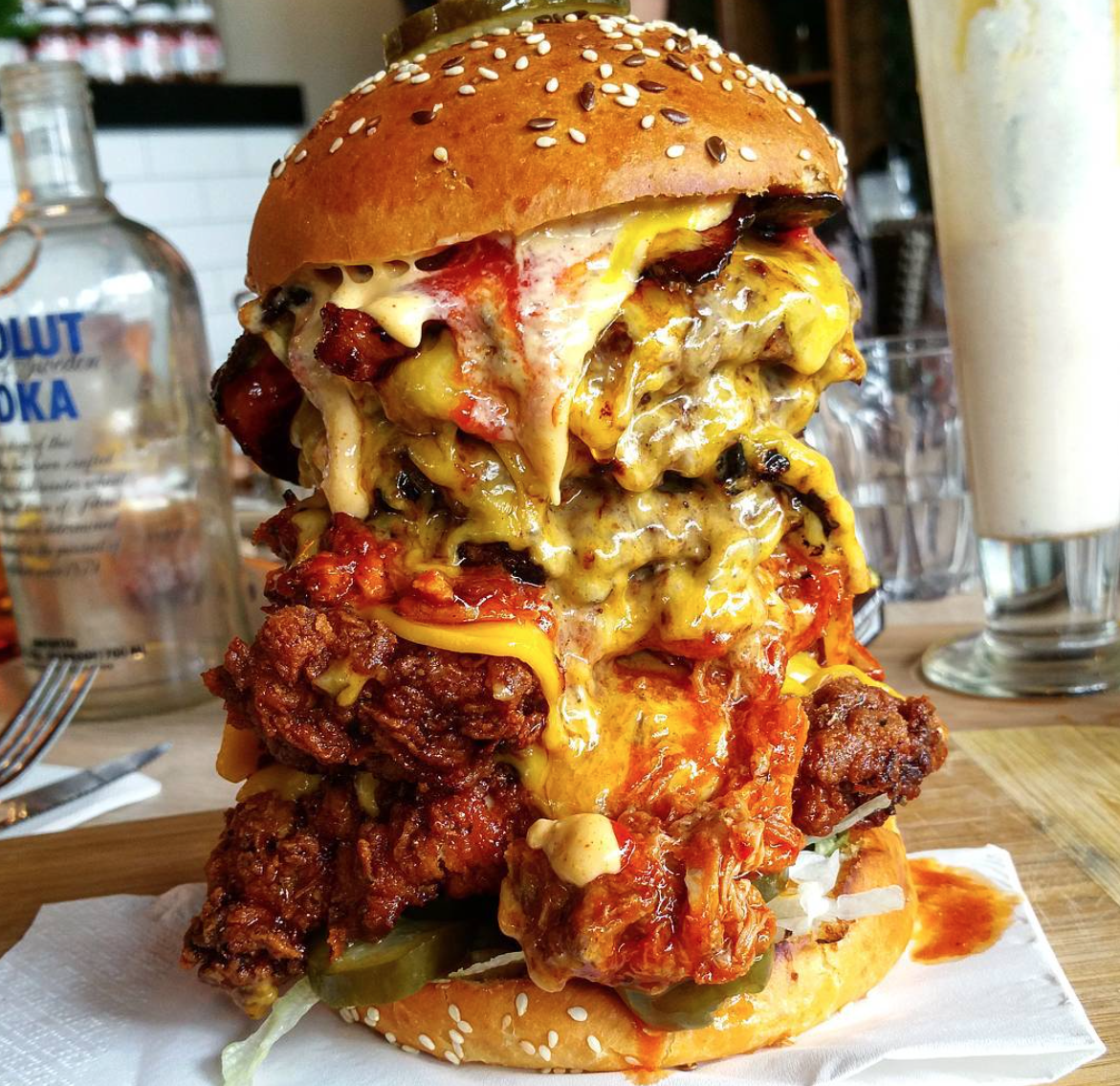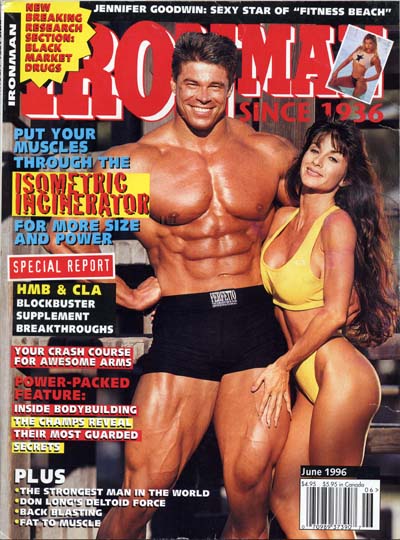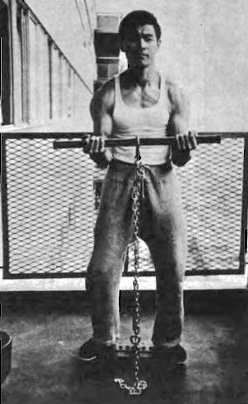Note: I don't know the author of this really quite excellent piece of work. Obviously, he's a lifter with experience and a great knowledge of both methods of training.
Whoever you are . . . THANKS BIG, MY FRIEND!!!
The workouts can be broken down into full body or a split.
Full Body:
Day 1: Squat & Bench
Day 2: OHP (overhead press) & Deadlift
Split:
Day 1: Squat & Deadlift
Day 2: Bench & OHP
Choosing one will depend on your level of skill and recovery (along with other individual factors). You can also play around with frequency if you are finding it difficult to recover between certain lifts, or if you feel some lifts require more frequency, for example:
Higher Squat & Bench/Lower Deadlift and OHP Template:
Day 1: Squat & Bench
Day 2: OHP and Deadlift
Day 3: Squat & Bench
Or
Higher Bench Frequency Template:
Day 1: Squat & Bench
Day 2: Bench & OHP
Day 3: Bench & Deadlift
There are many other variations that can be tailored to suit your individual, varying needs
The set-up is entirely up to you. If you are unsure about which set-up to use, start with the basic 3 day per week template (which is shown below), and adjust it once you complete the first cycle. The one recommended by Doug Hepburn was:
Day 1: Bench & OHP
Day 2: Squat & Deadlift
The frequency of training days would vary. Doug would recommend lifting one day ON followed by two days OFF for older lifters, and lifting 3-4 days per week for most people. Here are the standard 3 and 4 day templates (plus a 3.5 day template):
3 days/week: T/R/T/R/T/R/R
4 days/week: T/T/R/T/T/R/R
3.5 days/week: Train every other day
Some have had success even training 2 days per week with the standard template. However, in this Sheiko Blend version, it is recommended to train 3-4 days per week (or 5 if you're recovering just fine). This is because this method uses Sheiko style waves where volume and intensity go up and down from session to session. You're always going to get a heavy session followed by a light one.
Below are the workouts. Some weeks you may have an option of doing a different rep-range. In those scenarios, go by feel. For instance, if a week offers doing x2 (sets of 2) and x3, you can choose to do x3 for the first lift and x2 for the second lift (or vice versa). It is okay to mix and match rep ranges because each option is based on the same volume for that day.
Follow the reps and sets as prescribed. They may feel easy but the point is to move the weight as explosively as possible. Also, follow the prescribed warmup sets leading up to the work sets. As far as getting to the warmup sets (50-55% range), get there however you wish. Just don't fatigue yourself too much.
The percentages below are based on a TRUE 1-RM MAX (1-REP MAX). This should be a weight that you can hit with proper form and depth, and not an ego-driven grind. Don't choose a grind max that you barely hit. You will burn out . . . and die.
The lifts are written as REPS x SETS x PERCENTAGE. Here are the days and their options:
Day 1:
Option A -
5 x 50% (5 reps at 50%)
4 x 60% (4 reps at 60%)
3 x 2 x 70% (3 reps for 2 sets at 70%)
3 x 4 x 80% (3 reps for 4 sets at 80%)
Option B -
5 x 55%
4 x 65%
3 x 2 x 75%
2 x 2 x 85%
3 x 3 x 80%
Day 2:
Option A -
5 x 50%
5 x 2 x 60%
5 x 3 x 70%
Day 3:
Option A -
5 x 50%
4 x 60%
3 x 2 x 70%
3 x 6 x 80%
Option B -
5 x 55%
4 x 65%
3 x 2 x 75%
2 x 3 x 85%
Day 4:
Option A -
4 x 55%
4 x 2 x 65%
4 x 5 x 75%
Option B -
5 x 50%
5 x 2 x 60%
5 x 5 x 70%
Day 5:
Option A -
5 x 50%
4 x 60%
3 x 2 x 70%
3 x 8 x 80% (8 sets of 3 at 80%)
Option B -
5 x 55%
4 x 65%
3 x 2 x 75%
2 x 3 x 85%
4 x 4 x 75%
Day 6:
Option A -
4 x 55%
4 x 2 x 65%
4 x 7 x 75% (7 sets of 4 at 75%)
Option B -
5 x 50%
5 x 2 x 60%
5 x 6 x 70% (6 sets of 5 at 70%)
Option C -
5 x 50%
5 x 2 x 60%
4 x 4 x 75%
5 x 3 x 75% (3 sets of 5 at 75%)
Day 7:
Option A -
5 x 50%
4 x 60%
3 x 2 x 70%
3 x 10 x 80% (10 sets of 3 at 80%)
Option B -
5 x 50%
5 x 2 x 60%
5 x 7 x 70% (7 sets of 5 at 70%)
At the end of Day 7, assess the completed cycle and adjust accordingly. Add 5-10 lbs. to your ACTUAL MAX and start again, or repeat the same cycle if the weights did not move as well as you had hoped.
Play around with lift orders and frequency. If you are finding the workouts too difficult, you may need more recovery (or frequency. It's a guess and test game . . . just be patient).
Accessory Work
The rough guideline for accessories is to get a total of 30-50 reps in the x8-12 rep range. Accessory lifts are meant to help your weaknesses, so choose accordingly. As far as intensity goes, go heavy but always leave 2-4 reps in the tank. And never go heavy enough to break form. Since you will be doing sets of 8-12, fatigue will be a factor, so back if you start struggling.
Rehab work ant to be very low intensity. You're basically chasing the burn, promoting faster recovery while preventing injury. Rehab work can be done for 1-2 sets of x12-20 reps and should be done at the end of each workout. Pick 2-3 Accessories after your main work and 1-2 Rehab exercises for each workout.
Below are some accessories for each lift, as well as rehab work:
Squat & Deadlift:
Accessories -
Hyperextension
Good Mornings
BB Row
Pull-Up
Glute Ham Raise
Abs
Rehab:
Bodyweight Lunges
Leg Curl
Glute Bridge
Bird Dog
Bench & OHP:
Accessories -
French Press
DB Chest Flye
DB Military Press
Seated Cable Row
Lat Pulldown
DB Row
Dips
Rehab -
Triceps Pressdown
DB Hammer Curl
Band Pull-Apart
Cable Face-Pull
Example 1:
Bench (main work)
OHP (main work)
DB Flye 10 x 3 (accessory)
DB Row 8 x 4 (accessory)
DB Hammer Curl 15 x 3 (rehab)
Cable Face Pull 20 x 2 (rehab)
Example 2:
Squat (main work)
Bench (main work)
Good Morning 12 x 4 (accessory)
DB Row 10 x 3 (accessory)
French Press 12 x 3 (accessory)
Band Pull-Apart 20 x 1 (rehab)
If you are familiar with the terms NL (Number of Lifts), aRI (Average Relative Intensity), INOLs (Intensity/NL) and Sheiko philosophy, here is some scientific information you can use to analyze the program and to further structure your own program. If you're not familiar with this type of data then you can disregard this information.
Day 1
Option A. NL: 27 | aRI: 69.2 | INOL: 1.0
Option B. NL: 28 | aRI: 72.5 | INOL: 1.18
Day 2
NL: 30 | aRI: 63.1 | INOL: 0.85
Day 3
Option A. NL: 33 | aRI: 70.8 | INOL: 1.3
Option B. NL: 33 | aRI: 73.9 | INOL: 1.47
Day 4
Option A. NL: 36 | aRI: 70.2 | INOL: 1.28
Option B. NL: 40 | aRI: 64.7 | INOL: 1.18
Day 5
Option A. NL: 39 | aRI: 72.2 | INOL: 1.6
Option B. NL: 37 | aRI: 72.5 | INOL: 1.51
Day 6
Option A. NL: 40 | aRI: 70.5 | INOL: 1.44
Option B. NL: 45 | aRI: 65.1 | INOL: 1.35
Option C. NL: 43 | aRI: 69.2 | INOL: 1.46
Day 7
NL: 45 | aRI: 73.2 | INOL: 1.9
NL: 50 | aRI: 66.3 | INOL: 1.51
Whoever you are . . . THANKS BIG, MY FRIEND!!!
Hepburn x Sheiko:
A Hybrid Program for Strength & Hypertrophy
Full Body:
Day 1: Squat & Bench
Day 2: OHP (overhead press) & Deadlift
Split:
Day 1: Squat & Deadlift
Day 2: Bench & OHP
Choosing one will depend on your level of skill and recovery (along with other individual factors). You can also play around with frequency if you are finding it difficult to recover between certain lifts, or if you feel some lifts require more frequency, for example:
Higher Squat & Bench/Lower Deadlift and OHP Template:
Day 1: Squat & Bench
Day 2: OHP and Deadlift
Day 3: Squat & Bench
Or
Higher Bench Frequency Template:
Day 1: Squat & Bench
Day 2: Bench & OHP
Day 3: Bench & Deadlift
There are many other variations that can be tailored to suit your individual, varying needs
The set-up is entirely up to you. If you are unsure about which set-up to use, start with the basic 3 day per week template (which is shown below), and adjust it once you complete the first cycle. The one recommended by Doug Hepburn was:
Day 1: Bench & OHP
Day 2: Squat & Deadlift
The frequency of training days would vary. Doug would recommend lifting one day ON followed by two days OFF for older lifters, and lifting 3-4 days per week for most people. Here are the standard 3 and 4 day templates (plus a 3.5 day template):
3 days/week: T/R/T/R/T/R/R
4 days/week: T/T/R/T/T/R/R
3.5 days/week: Train every other day
Some have had success even training 2 days per week with the standard template. However, in this Sheiko Blend version, it is recommended to train 3-4 days per week (or 5 if you're recovering just fine). This is because this method uses Sheiko style waves where volume and intensity go up and down from session to session. You're always going to get a heavy session followed by a light one.
Below are the workouts. Some weeks you may have an option of doing a different rep-range. In those scenarios, go by feel. For instance, if a week offers doing x2 (sets of 2) and x3, you can choose to do x3 for the first lift and x2 for the second lift (or vice versa). It is okay to mix and match rep ranges because each option is based on the same volume for that day.
Follow the reps and sets as prescribed. They may feel easy but the point is to move the weight as explosively as possible. Also, follow the prescribed warmup sets leading up to the work sets. As far as getting to the warmup sets (50-55% range), get there however you wish. Just don't fatigue yourself too much.
The percentages below are based on a TRUE 1-RM MAX (1-REP MAX). This should be a weight that you can hit with proper form and depth, and not an ego-driven grind. Don't choose a grind max that you barely hit. You will burn out . . . and die.
The lifts are written as REPS x SETS x PERCENTAGE. Here are the days and their options:
Day 1:
Option A -
5 x 50% (5 reps at 50%)
4 x 60% (4 reps at 60%)
3 x 2 x 70% (3 reps for 2 sets at 70%)
3 x 4 x 80% (3 reps for 4 sets at 80%)
Option B -
5 x 55%
4 x 65%
3 x 2 x 75%
2 x 2 x 85%
3 x 3 x 80%
Day 2:
Option A -
5 x 50%
5 x 2 x 60%
5 x 3 x 70%
Day 3:
Option A -
5 x 50%
4 x 60%
3 x 2 x 70%
3 x 6 x 80%
Option B -
5 x 55%
4 x 65%
3 x 2 x 75%
2 x 3 x 85%
Day 4:
Option A -
4 x 55%
4 x 2 x 65%
4 x 5 x 75%
Option B -
5 x 50%
5 x 2 x 60%
5 x 5 x 70%
Day 5:
Option A -
5 x 50%
4 x 60%
3 x 2 x 70%
3 x 8 x 80% (8 sets of 3 at 80%)
Option B -
5 x 55%
4 x 65%
3 x 2 x 75%
2 x 3 x 85%
4 x 4 x 75%
Day 6:
Option A -
4 x 55%
4 x 2 x 65%
4 x 7 x 75% (7 sets of 4 at 75%)
Option B -
5 x 50%
5 x 2 x 60%
5 x 6 x 70% (6 sets of 5 at 70%)
Option C -
5 x 50%
5 x 2 x 60%
4 x 4 x 75%
5 x 3 x 75% (3 sets of 5 at 75%)
Day 7:
Option A -
5 x 50%
4 x 60%
3 x 2 x 70%
3 x 10 x 80% (10 sets of 3 at 80%)
Option B -
5 x 50%
5 x 2 x 60%
5 x 7 x 70% (7 sets of 5 at 70%)
At the end of Day 7, assess the completed cycle and adjust accordingly. Add 5-10 lbs. to your ACTUAL MAX and start again, or repeat the same cycle if the weights did not move as well as you had hoped.
Play around with lift orders and frequency. If you are finding the workouts too difficult, you may need more recovery (or frequency. It's a guess and test game . . . just be patient).
Accessory Work
The rough guideline for accessories is to get a total of 30-50 reps in the x8-12 rep range. Accessory lifts are meant to help your weaknesses, so choose accordingly. As far as intensity goes, go heavy but always leave 2-4 reps in the tank. And never go heavy enough to break form. Since you will be doing sets of 8-12, fatigue will be a factor, so back if you start struggling.
Rehab work ant to be very low intensity. You're basically chasing the burn, promoting faster recovery while preventing injury. Rehab work can be done for 1-2 sets of x12-20 reps and should be done at the end of each workout. Pick 2-3 Accessories after your main work and 1-2 Rehab exercises for each workout.
Below are some accessories for each lift, as well as rehab work:
Squat & Deadlift:
Accessories -
Hyperextension
Good Mornings
BB Row
Pull-Up
Glute Ham Raise
Abs
Rehab:
Bodyweight Lunges
Leg Curl
Glute Bridge
Bird Dog
Bench & OHP:
Accessories -
French Press
DB Chest Flye
DB Military Press
Seated Cable Row
Lat Pulldown
DB Row
Dips
Rehab -
Triceps Pressdown
DB Hammer Curl
Band Pull-Apart
Cable Face-Pull
Example 1:
Bench (main work)
OHP (main work)
DB Flye 10 x 3 (accessory)
DB Row 8 x 4 (accessory)
DB Hammer Curl 15 x 3 (rehab)
Cable Face Pull 20 x 2 (rehab)
Example 2:
Squat (main work)
Bench (main work)
Good Morning 12 x 4 (accessory)
DB Row 10 x 3 (accessory)
French Press 12 x 3 (accessory)
Band Pull-Apart 20 x 1 (rehab)
If you are familiar with the terms NL (Number of Lifts), aRI (Average Relative Intensity), INOLs (Intensity/NL) and Sheiko philosophy, here is some scientific information you can use to analyze the program and to further structure your own program. If you're not familiar with this type of data then you can disregard this information.
Day 1
Option A. NL: 27 | aRI: 69.2 | INOL: 1.0
Option B. NL: 28 | aRI: 72.5 | INOL: 1.18
Day 2
NL: 30 | aRI: 63.1 | INOL: 0.85
Day 3
Option A. NL: 33 | aRI: 70.8 | INOL: 1.3
Option B. NL: 33 | aRI: 73.9 | INOL: 1.47
Day 4
Option A. NL: 36 | aRI: 70.2 | INOL: 1.28
Option B. NL: 40 | aRI: 64.7 | INOL: 1.18
Day 5
Option A. NL: 39 | aRI: 72.2 | INOL: 1.6
Option B. NL: 37 | aRI: 72.5 | INOL: 1.51
Day 6
Option A. NL: 40 | aRI: 70.5 | INOL: 1.44
Option B. NL: 45 | aRI: 65.1 | INOL: 1.35
Option C. NL: 43 | aRI: 69.2 | INOL: 1.46
Day 7
NL: 45 | aRI: 73.2 | INOL: 1.9
NL: 50 | aRI: 66.3 | INOL: 1.51





















